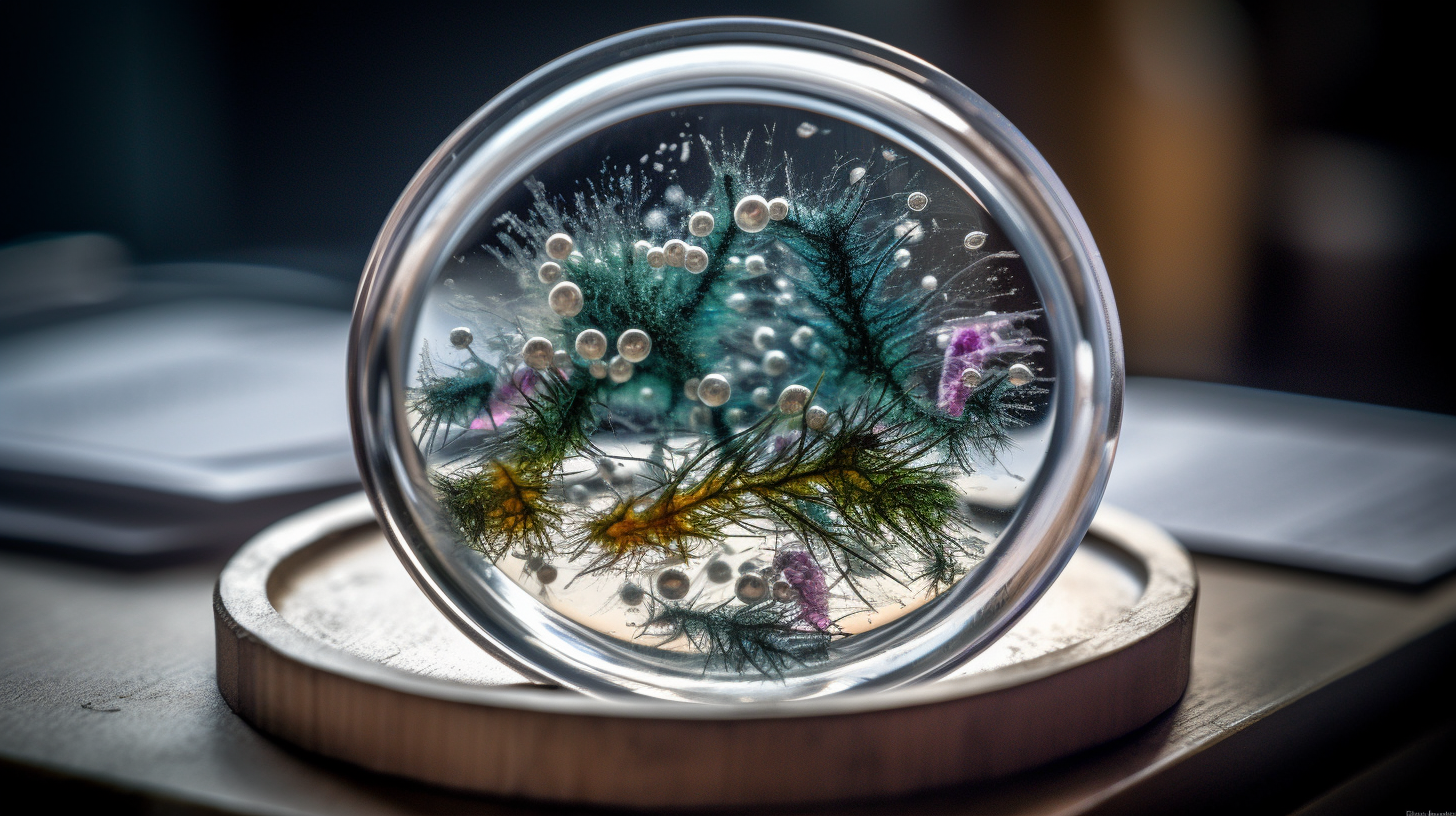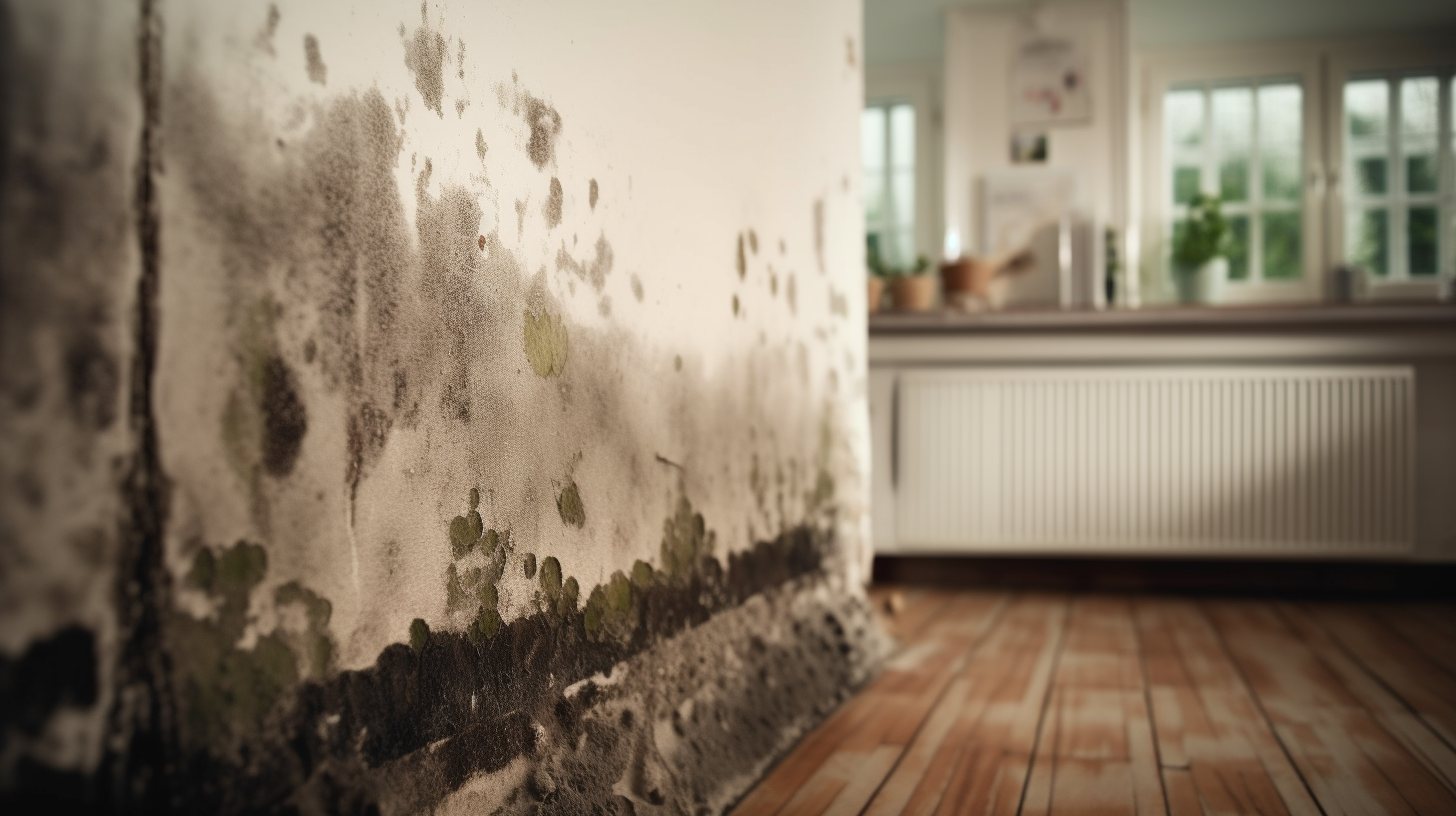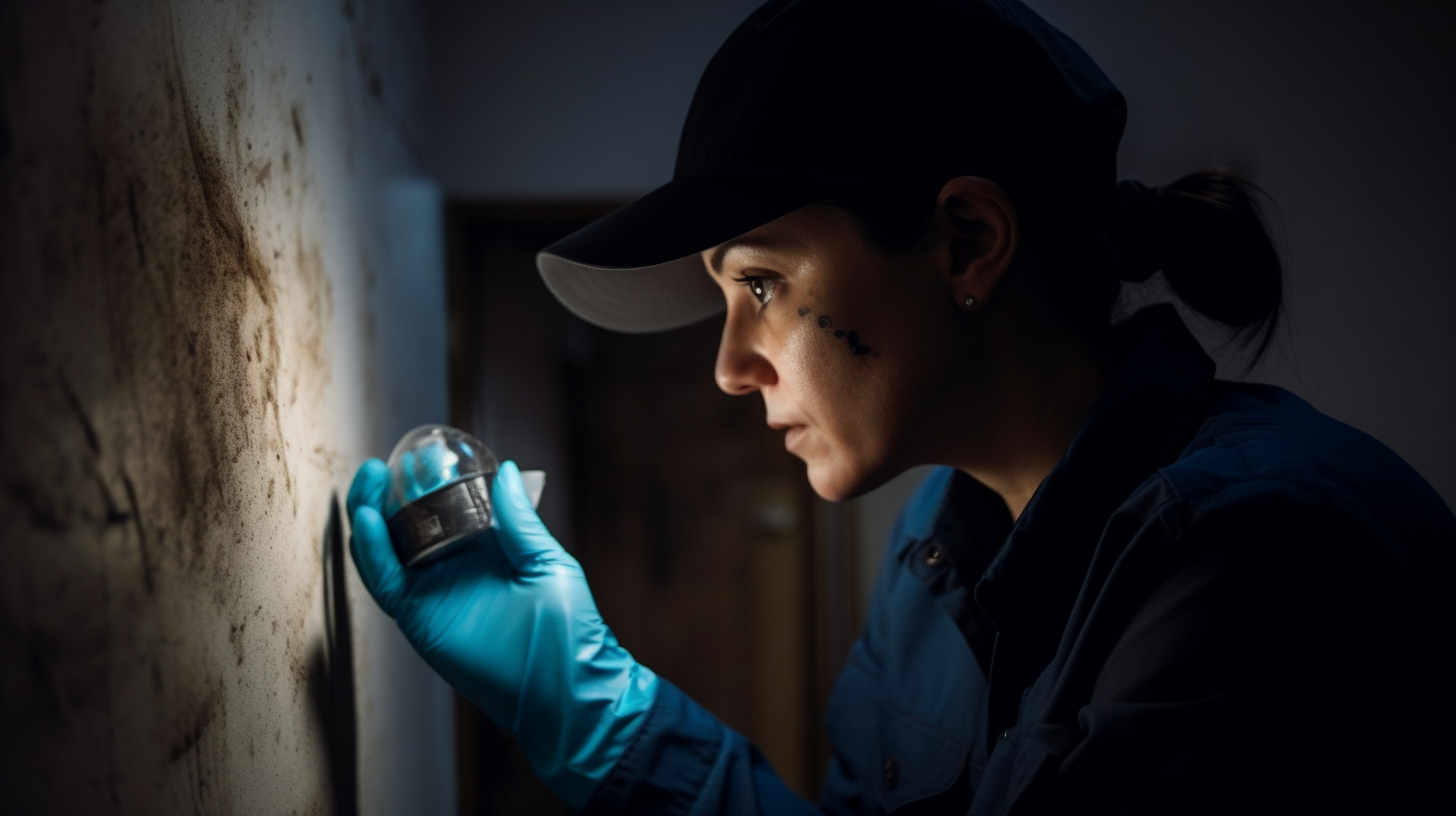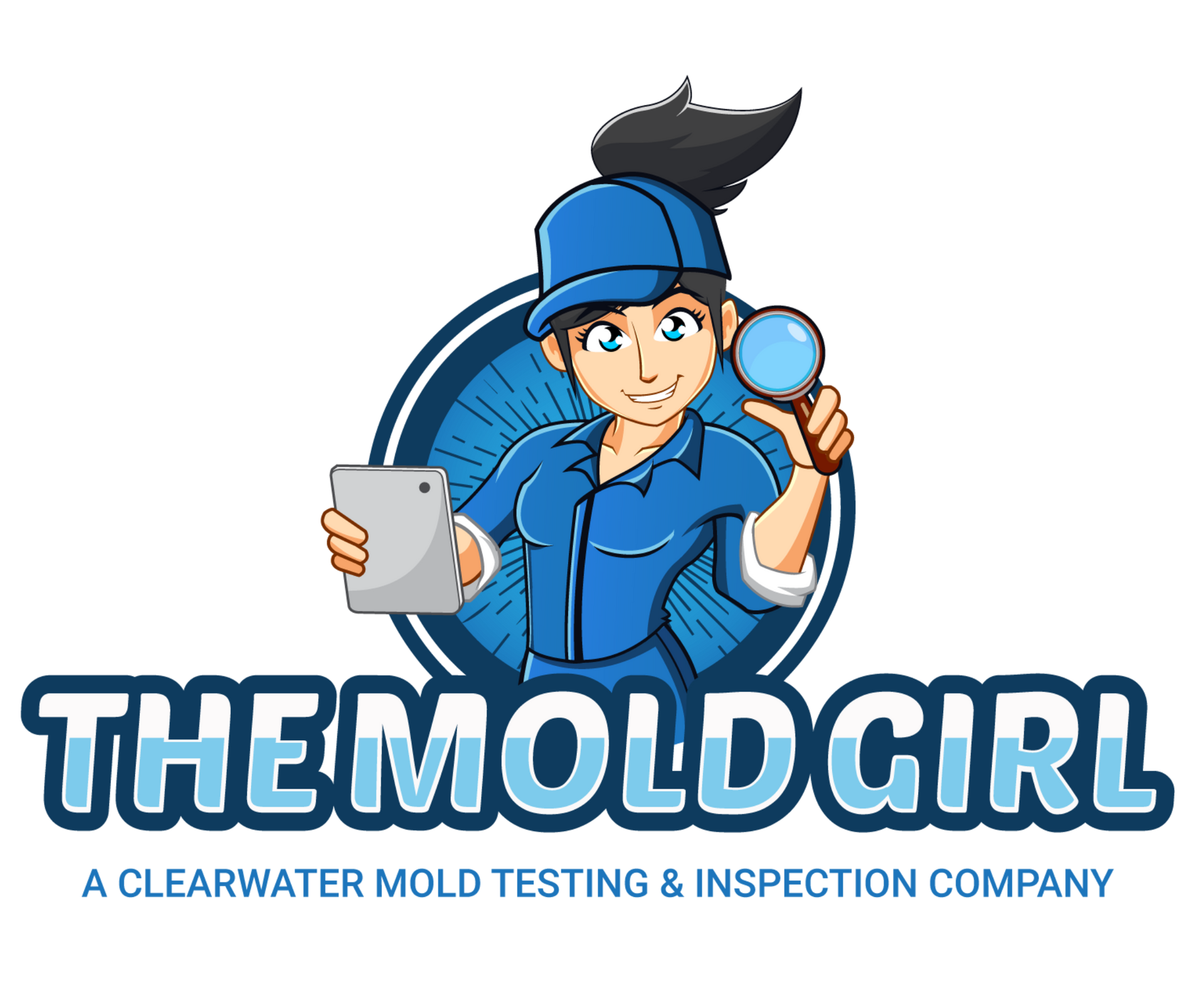By Liz Keefer
•
18 Apr, 2023
When it comes to maintaining a healthy, hygienic, and safe environment in your home, identifying different types of mold is an incredibly important step. Mold is not something to be taken lightly - we're all aware of the dangerous health risks associated with it, and how difficult it can be to remove once it has set in. Unfortunately, it can exist in any damp, dark, and humid environment - and the chances of it taking hold increase in households where there's poor temperature, air flow, and ventilation. As such, knowing how to identify the different types of mold in your home can help you take preventative measures in order to stop it from forming in the first place. In this blog post, we'll be exploring the different types of mold and the signs of a potential issue, with the ultimate aim of helping you to keep your home safe and healthy. We'll be looking closely at the dangers of mold, how to spot it, and how best to go about treating it. Let's get started. Quick Overview There are several different types of mold, including Aspergillus, Alternaria, Cladosporium, Penicillium, and Stachybotrys. Some molds are harmless while others can cause health issues, so it is important to be aware of the type of mold in your home. Types of Mold Mold is a type of fungus that can be found both indoors and outdoors. It reproduces by spreading airborne spores of itself, which can cause health issues. There are many different types of mold, some more dangerous than others. The four most common types of mold found in homes are Cladosporium, Penicillium, Aspergillus, and Alternaria. Cladosporium is an outdoor variety of mold that appears black, greenish-black, or grayish-brown in color. It can typically be found on walls and floors near windows, air conditioning units, or leaky pipes. This type of mold releases toxins into the air called mycotoxins, which can damage the liver and other organs. Penicillium is very common indoor mold that is often blue or green in color and has a musty odor. It tends to thrive in soggy carpets or furniture and is commonly found in bathrooms or areas prone to water damage. Inhaling Penicillium spores can cause allergic reactions ranging from simple sneezing to more severe asthma-like symptoms. Aspergillus is another common indoor species that usually appears green or brown and likes warm, humid environments such as basements or attics. This type of mold produces spores that contain a mycotoxin known as aflatoxins which has been associated with certain types of cancer. Finally, Alternaria is a type of mold that tends to colonize surfaces quickly if given the right environment. It has black spots and multicolored fibers extending outwards like a fringe around it. Allergic reactions to Alternaria include runny nose, itchy eyes, sore throat, coughing and rashes when exposed to its spores. While all four types of molds have potential problems associated with them, identifying these molds requires both knowledge and experience in order to be able to make sure you are taking the necessary steps for prevention and treatment correctly. Now that we’ve discussed the different types of molds that could be present in your home let's move onto discussing about visible signs of mold growth so we can better understand how it may affect us further down the line. There are over 100,000 known species of mold. According to the Center for Disease Control, the most common indoor molds are Cladosporium, Penicillium, and Aspergillus. A study published in 2018 found that the presence of certain molds can increase the risk of lung problems and asthma in children. Visible Mold Growth Mold growth is a serious issue in the home and can be damaging to both your health and the structure of your house. One way that mold can be identified is through visible growth. Oftentimes, mold will appear as dark stains on walls, porous surfaces, grout lines, and other areas with moisture or dampness in your home. However, it’s not always easy to spot; sometimes the growth can even be right under our noses! Visible mold growth may not pose as much of an immediate danger to us on the surface, but it is still something that should not be taken lightly. In many cases, particularly when there has been water damage present in the home already, it could be a sign of an underlying problem with moisture buildup and potentially a larger infestation of mold. Other times, what appears to just be a spot of discoloration may easily grow into something more overwhelming if left unchecked or exposed to enough moisture. Therefore, regardless of how minor the visible mold may seem at first glance, it’s wise to look into proper steps for remediation as soon as possible so that further problems don’t arise. Recently developed products like specialized paints, stain removal solutions, and sealants offer some reliable approaches for milder cases of visible mold growth. But for more severe cases found underneath drywall or in crevices between walls and ceilings, professional services might be necessary in order to properly clean up the affected area while also taking preventative measures against future outbreaks. As with all types of mold growths in the home, early detection is key for preventing further damage from occurring. While you should definitely take note of any signs of visible mold you find in your home – whether obvious or subtle – it's equally important to remain aware for other telltale signs (such as spots and odors) that may signal unseen problems with black mold nearby. Black Mold Black mold is the most common type of visible mold growth and it can be a major cause for concern due to its potential health effects. Black mold, or Stachybotrys chartarum, tends to form patches or clusters on damp surfaces and can secrete toxins into the air that can cause asthma, as well as other respiratory illnesses and other health problems such as fever or sore throat. As a result, many experts advise homeowners to take steps to identify and rid their homes of black mold. On the flipside, not all black mold is bad for you. According to the EPA, "In general, the presence of any mold indoors should be avoided...However, if the mold found indoors is black in appearance, there is no need to test it because most likely it is not one of the toxic molds." The EPA also recommends that after discoveringblackmold indoors, homeowners first use water and detergent for removal instead of more expensive methods, such as chemicals or special equipment. Despite the fact that only some types of black mold are known to be harmful, having visible patches of black mold in your home can create an uncomfortable living environment. Therefore, wherever possible, it's important to determine exactly what type of black mold you have and develop an appropriate plan of action that includes proper safety gear and protective measures. From there, transitioning to prevention is key by reducing indoor humidity levels and addressing any standing water builds up that can lead to future risks of furtherblackmold growth. By taking proactive steps and addressing any issues promptly with help from a professional company when necessary, you can promote better home hygiene and ensure your family's wellbeing moving forward. With this being said, it's equally important to remain aware of other forms of visible mold growth such as greenmoldin order to stay ahead of any potential issue. Crucial Highlights Black mold, or Stachybotrys chartarum can cause serious health problems, so homeowners should take steps to identify and rid their homes of it. Not all black mold is harmful, but having visible patches can create an uncomfortable living environment. Taking proactive steps and addressing any issues promptly with help from a professional is key in order to promote better home hygiene and ensure family wellbeing. It’s also important to remain aware of other forms of mold growth. Green Mold After looking at the treacherous black mold, you might be wondering if any of the other colors of mold out there are just as dangerous — even if they don't look like something from a horror movie. Green mold is one such type of mold that can cause significant health risks. The most common green molds are Penicillium and Cladosporium species, which aren't considered to be as severe as black molds in terms of health risks. There's some debate whether green mold should be concerning or not. Some evidence shows that exposure to certain types of green mold has caused significant respiratory problems in humans, while other research suggests it's relatively non-toxic unless exposed to large amounts. For prevention sake, it may be wise to act carefully when dealing with green mold. The best thing to do is to eliminate any and all sources of moisture and contact a professional for advice on how to safely remove green mold from your home. Now that we're familiar with different kinds of mold, it's important to understand how these tiny microorganisms can pose a serious risk for human health — something we'll explore next. How Does Mold Cause Harm? Green mold is just one type of fungus found in homes, and while most varieties are merely unsightly, some forms can cause harm to our health. The decision to remove any type of fungi should ultimately depend on the individual's level of comfort, their lifestyle and their preferences. For example, a person with a respiratory issue such as asthma should take extra caution if they discover any spatial growths in their home. It is important to note that it is still debated amongst scientific researchers whether or not there is a definitive cause-and-effect relationship between mold exposure and acute health problems. Proponents of an association point to documented cases of increased illnesses related to water-damaged buildings. Additionally, they cite clinical studies that link an increase in respiratory symptoms to areas with higher levels of fungal concentrations. However, opponents of the association disagree and suggest that more research must be conducted in order to draw any conclusions. At this time, it is always wise for those living in old buildings or areas with high moisture levels to practice mold prevention measures - dampness control combined with rapid removal may go a long way in reducing potential risks from certain species of fungi. Such actions can ensure there is no period for spores to flourish and limit contact time when dealing with existing colonies. With vigilance and ongoing maintenance, it can be easy for folks to keep an eye out for potential threats so they remain well-informed about any mold presence in their living space. Speaking of which, while it is difficult to predict what lies ahead, one thing we know for sure is that microscopic organisms like bacteria will always play a role under our roof; the area revolving around harmful bacteria and spores must be explored further. Harmful Bacteria and Spores Mold colonies can also release toxic substances and harmful bacteria known as mycotoxins. The presence of mycotoxins in the air can lead to allergic reactions, headaches, dizziness, and respiratory infections. Mycotoxins have even been linked to cancer in some cases. Additionally, mold produces a variety of harmful spores that can inhabit areas of the home as well. Spores are what allow molds to spread and multiply, but an elevated spore count can create a dangerous environment in the home. It is important to note that not all molds are harmful. While exposure to certain molds might cause health problems, others only result in cosmetic damage. It is essential to accurately identify molds in order to determine how great or little of a threat it poses to one’s health. The type and severity of harm caused by mold is determined by multiple factors such as access to moisture, length of time spent exposed, and other environmental conditions found within the home. As such, understanding what forces affect mold growth can help us identify how great or small a risk of it being a danger exists for homeowners. Factors Affecting Mold Growth Mold can grow in both indoors and outdoors, although the environment indoors can be much more conducive to rapid mold growth than outdoors. There are a number of factors that affect the prevalence and severity of mold growth inside homes or buildings. Some of these potential factors include humidity, temperature, water damage, ventilation systems, building materials, and overall cleanliness. Humidity and temperature are two major factors in mold growth. Warm temperatures combined with a high humidity level provide ideal conditions for spores to begin to multiply. During summer months or in very humid environments, it's better to regulate the indoor temperature with air conditioning units and use dehumidifiers to reduce moisture levels in the air. Water damage is another major contributor to mold growth. Areas which experience flooding or where there are ongoing leaks will often be more prone to mold growth. In such situations, it's important to identify any water leaks quickly and take action to prevent further damage as well as find help right away to remove unwanted moisture. Repairing any plumbing issues is essential in avoiding further damages to your home’s structure. The quality of your interior ventilation system also plays a key role in dampness control. Lower quality ventilation systems may not be able to effectively move moist air out of your home effectively leading to higher levels of internal humidity which can lead to severe condensation on walls and ceilings and an increase in unwelcome pests like dust mites and mold spores. The type of building materials used throughout your living space can also affect the rate of mold growth. Building materials containing cellulose such as paper products, cardboard boxes, wood paneling or insulation will be especially prone to supporting microbial activity due to their ability to absorb moisture from their environment making them prime targets for mold colonies. Finally, cleaning your home regularly with appropriate household cleaners can suppress the proliferation of molds by reducing environmental moisture levels and removing organic material that may otherwise act as fuel sources for mold growth. Overall good cleanliness practices including sweeping floors, vacuum carpets and rugs, changing HVAC air filters regularly etc., will help maintain a lower humidity environment in your home and keep unwanted pathogens at bay. By taking steps such as regulating humidity levels, eliminating water damage, enhancing ventilation systems, monitoring building materials used, and cleaning periodically we can significantly decrease the chances that our homes become an attractive habitat for bacteria and Mold spores . This emphasis on controlling moisture along with other possible contamination points sets the foundation for understanding how best to prevent Moisture-related issues from occurring within our homes so let’s dig deeper into this concept cause one should always strive towards keeping indoor environments as clean and dry as possible. Moisture and Contamination When determining if mold is present in your home, it is important to note the level of moisture and contamination. High levels of moisture can contribute greatly to mold growth, as molds thrive in damp environments. If there are any leaks or flooding in your home, these should be taken care of right away as they could cause serious health problems. Additionally, too much humidity in an indoor space increases the chances of mold developing over time. Contamination can also play a large role in how much mold grows in a certain area. If a contaminated material like soil gets inside your home, it can act as a source of nutrients for the mold spores to feed off of. This accelerates the growth process of the mold colonies and can easily lead to them taking over an entire room if not addressed quickly. It is important for homeowners to check for both moisture and contamination separately to get an accurate picture on the extent of mold growth in their homes. Taking into account both of these factors will allow you determine whether you have a serious problem or something more manageable that requires only minimal treatment. From there, you can move onto assessing the property damage caused by the mold so that you can begin to rehabilitate your home back to its normal condition. Assessing Property Damage From Mold Assessing property damage from mold is a critical part of identifying different types of mold in your home. The main priority when assessing damage from mold is to identify the source of moisture, whether from a leak or structural defect, and eliminate it. Once the source of the moisture has been identified, the next step is to clean up any existing contamination and determine if any structures have sustained damage. Property damage caused by mold can range from small spots on walls to full-scale structural damage, making it essential to accurately determine the extent of the damage and its impact on the building. When determining property damage due to mold, there are two camps of thought. On one side, some believe that any visible mold should be treated as an emergency situation that needs to be remediated immediately. Others argue that only significant or active mold growth should be addressed urgently and minor infestations can wait until further evidential assessment is done by a qualified professional. Evidence suggests that depending on the type of material affected, property damage due to mold can occur quickly and spread quickly if left untreated. Some types of materials such as paper, wood and drywall can be more easily affected by fungal growth than concrete or plastic which are more often affected by bacteria. In addition, outdoor fungal systems tend to cause much less property damage than indoor ones given their access to beneficial environmental factors like sunlight and rain which helps reduce their prevalence. Larger colonies present a higher risk where they tend to penetrate harder surfaces such as tile grout creating larger and deeper networks in less time than smaller collectives. As such, it is essential for homeowners with visible mold in their home to seek out a qualified professional to assess their level of property damage before taking any action in order to ensure sufficient covered by insurance coverage as well as not over-remediating a controllable situation thus depleting resources unnecessarily. The best way for homeowners to protect their investment is to take proactive steps such as regular inspections for signs of moisture intrusion and responding early in cases where it is discovered. Frequently Asked Questions and Responses Are there different classes of mold, and if so, what are they? Yes, there are different classes of mold, and they can be divided into three main categories: allergenic molds, pathogenic molds, and toxigenic molds. Allergenic molds cause hay fever like symptoms such as sneezing and coughing, but without serious health risks. Common examples of allergenic molds include Alternaria, Penicillium, and Cladosporium. Pathogenic molds cause infections in people who have weakened immune systems or chronic illnesses, particularly those in hospitals or nursing homes. Examples include Aspergillus and Mucor species. Toxigenic molds produce toxins called mycotoxins which cause more serious health effects, such as rashes and neurological disorders. Some examples of toxigenic molds include Stachybotrys species (black mold) and Fusarium species. It is important to note that these categories are not mutually exclusive and it is possible for a single type of mold to belong to multiple categories simultaneously. What dangers do different types of mold present? Different types of mold can present a range of health risks depending on the type and the extent of exposure. For example, black mold produces toxins that can cause breathing problems, eye and skin irritation, allergic reactions, and has even been linked to an increased risk of neurological issues. Toxic molds such as stachybotrys chartarum (black mold) or aspergillus have been linked to severe lung infections or disease in some cases. Inhalation of certain fungal spores has also been associated with digestive issues and even severe systemic illness. Furthermore, some molds produce mycotoxins which can affect the air quality of your home by both releasing airborne spores, and by releasing volatile organic compounds (VOCs). In fact, long-term exposure to VOCs found in certain molds have been associated with cancer, kidney damage, liver damage, neurological damage, memory loss and heart diseases. Therefore it is important to remember that any type of mold has the potential to present a health hazard and should be treated with caution. If you suspect there is mold growth in your home it is best to contact a professional for assistance in identification and removal. What conditions are conducive to the growth of different types of mold? The growth of any type of mold in the home depends on a combination of moisture, temperature and suitable nutrients. Moisture is generally the most important factor as it creates an environment that allows the mold to thrive. High levels of humidity coupled with condensation or flooding provide ideal conditions for the growth of any type of mold. The temperature at which different types of mold grow varies, but most will grow in warm indoor temperatures of between 68-86 degrees Fahrenheit. Different types of molds need different types of nutrients to replicate and this should also be taken into account when identifying different types of mold in the home. For example, some molds can feed on cellulose found in wood, fabrics and paper products, while others prefer food sources such as cheese or bread. Understanding the distinct environmental requirements for each type of mold is key to understanding their presence and eradicating them from your home.










